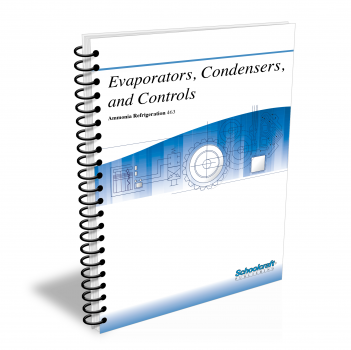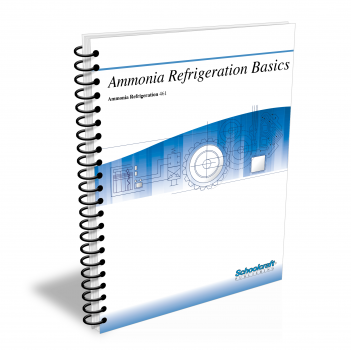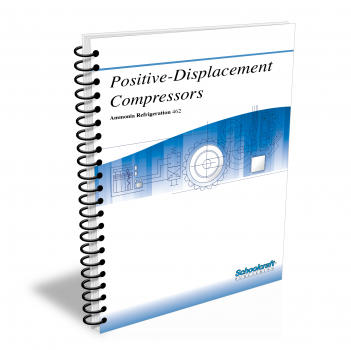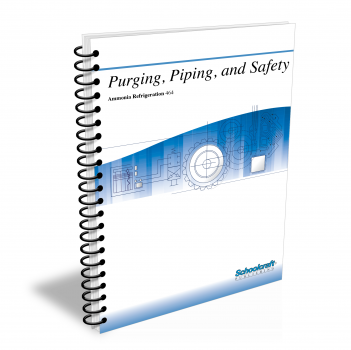Evaporators, Condensers, and Controls

Course Number: 463
The Evaporators, Condesners, and Controls textbook covers gravity feed, overfeed, dump trap, CPR, and DX supply systems. It describes evaporator and evaporative condenser design, selection, and operation. It discusses various defrost systems' hot gas, electric, water, and glycol spray. Finally, the textbook examines stop, shutoff, relief, check, solenoid, expansion, pressure-regulating, and float valves.
Does your curriculum require additional topics not included in this textbook? Build a customized version of the Evaporators, Condensers, and Controls textbook below.
Recommended Contact Hours – 10
Preview a Chapter
Available Supporting Material
- Table of Contents
- Exam Copies
- Suggested Titles
Table of Contents
Chapter 1: Liquid Ammonia Evaporator Supply Methods
Topics: Gravity feed, liquid overfeed, pumped overfeed, dump trap, controlled pressure receiver, direct expansion, and flooded liquid chiller systems
Learning Objectives:
- Explain how refrigerant flows in a thermosyphon system and describe the requirements for a surge drum in a gravity feed system.
- List the benefits of a machine room liquid recirculation unit and benefits compared to direct expansion systems.
- Describe the various level controls used in a recirculation unit and explain how the liquid refrigerant is pumped from the recirculation unit through the evaporator coils.
- Describe how a dump trap functions and how it differs from a pumped overfeed system.
- Discuss the differences between a recirculation unit and a CPR system.
- Explain how a thermal expansion valve works and why a DX coil must have more heat transfer surface than an overfeed coil.
- Describe the liquid feed and operation of flooded ammonia shell-and-tube fluid coolers.
Chapter 2: Evaporators
Topics: Evaporator operation and heat transfer principles; Tube design; Chillers; Air coils; Freezers; Ice makers; Specialty evaporators
Learning Objectives:
- Discuss basic details of evaporator operation, including the use of secondary coolant.
- List basic principles affecting evaporator heat transfer ability in DX and liquid overfeed systems.
- Discuss the reasons for coil fins and enhanced tube designs.
- Describe common DX and flooded liquid chillers.
- Discuss the construction and operation of evaporators used as air coils (coolers), including the benefits of penthouse installation.
- Describe the operation of various common kinds of freezers and ice makers.
- Explain how subcoolers, intercoolers, and thermosyphon oil coolers function as evaporators.
Chapter 3: Air Unit Defrost Systems
Topics: Reasons for defrost; Hot gas, soft hot gas, electric, water, continuous glycol spray, and room air defrost; Defrost cycle initiation and termination
Learning Objectives:
- Explain why ice and frost form on a coil and discuss the problems resulting from this formation.
- Describe the basic process of defrosting by means of hot gas from the compressor discharge.
- Explain how the soft hot gas defrost system protects large industrial coils.
- Describe common defrost methods that do not use hot gas-electric, water, continuous glycol spray, and room air.
- Describe preset timer defrost methods.
Chapter 4: Evaporative Condensers
Topics: Evaporative condenser basics and design features; Condenser selection; Condenser location; Refrigerant piping; Winter operation and capacity control; Water treatment
Learning Objectives:
- Describe the basic differences between air-cooled, water-cooled, and evaporative condensers and discuss the main operating features of each.
- Discuss the benefits of the evaporative condenser and explain why it has the lowest condensing temperature.
- Describe the design components of an evaporative condenser and explain how they work together to provide cooling.
- Discuss both the process of condenser selection and good and bad practices in locating condensers.
- Describe proper piping and equalization practices for both single and multiple condenser installations.
- Explain the need for condenser winterization and capacity control and discuss proper water treatment to control mineral and bacterial content.
Chapter 5: Control Valves and Switches
Topics: Safety relief, stop and shutoff, check, solenoid, hand expansion, pressure regulating, and float valves; Float valve switches and controllers
Learning Objectives:
- Discuss the relief valve safety requirements as specified by the ASHRAE 15 code.
- Explain why dual relief valves are used, describe proper positioning of the three-way diverting valve, and explain how to calculate relief valve flow capacity.
- Describe the functioning of the various stop valves used on ammonia systems and explain why angle valves are preferred.
- Describe the various kinds of check valves and solenoid valve uses in automatic control on ammonia refrigeration systems.
- Describe the operation and functions of the hand expansion valve and describe typical pressure regulating valve applications and methods by which the valve is controlled.
- Discuss system high-side and low-side float valve uses and describe the operation of mechanical float switches.
- Discuss the benefits of the newer electronic level controllers in the automatic control of liquid levels, safety alarms, and system shutdown procedures.
Request Exam Copies
Exam Copies
Ready to see a copy of our textbooks? After selecting which textbooks you’d like to review for your course, you can submit your request by either logging in or creating an account so we know where to ship your exam copies. A representative from Schoolcraft will contact you to confirm and finish processing your request.
Exam copies are always free and yours to keep.
Selected Exam Copies
none selected
* Maximum of five copies can be ordered


